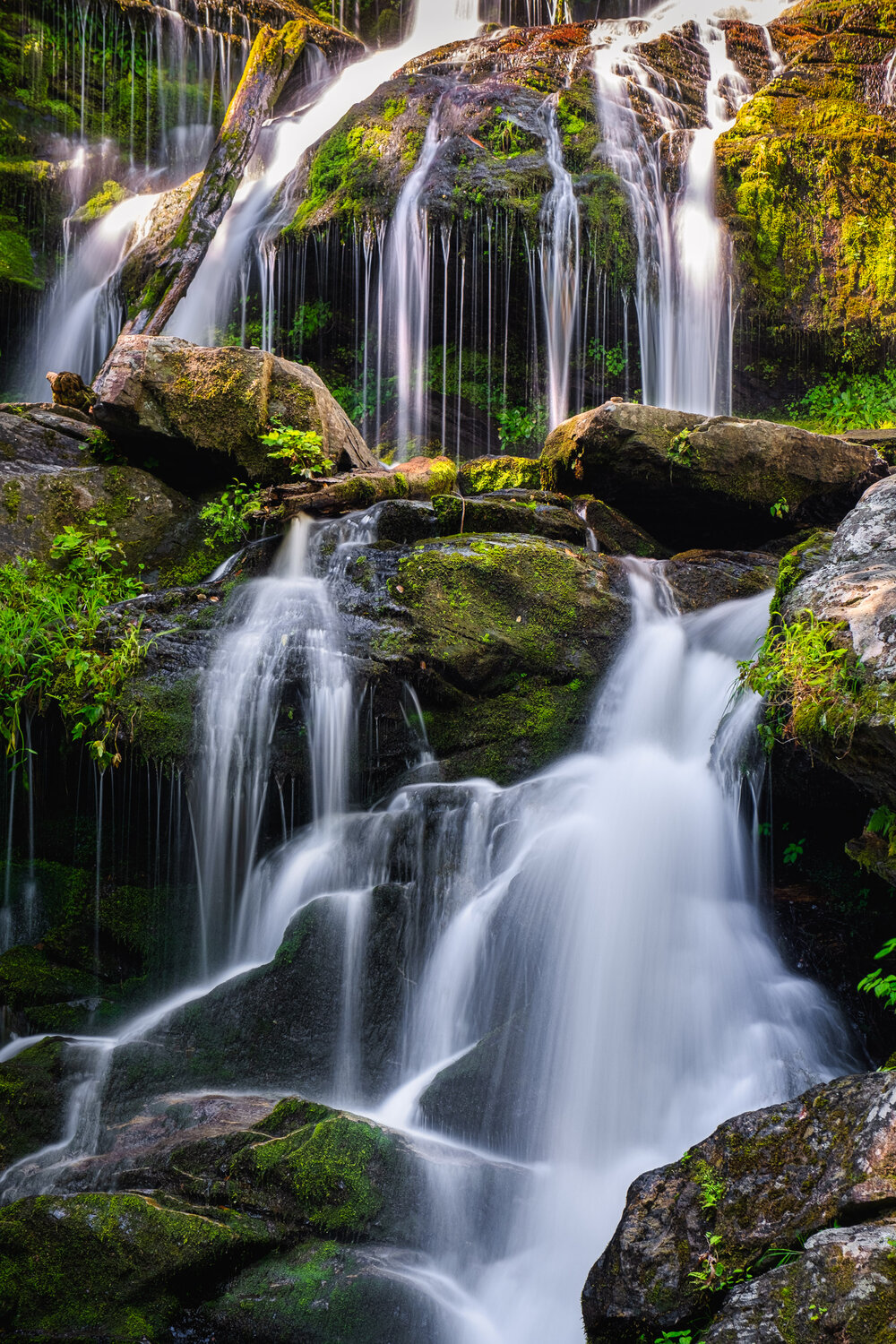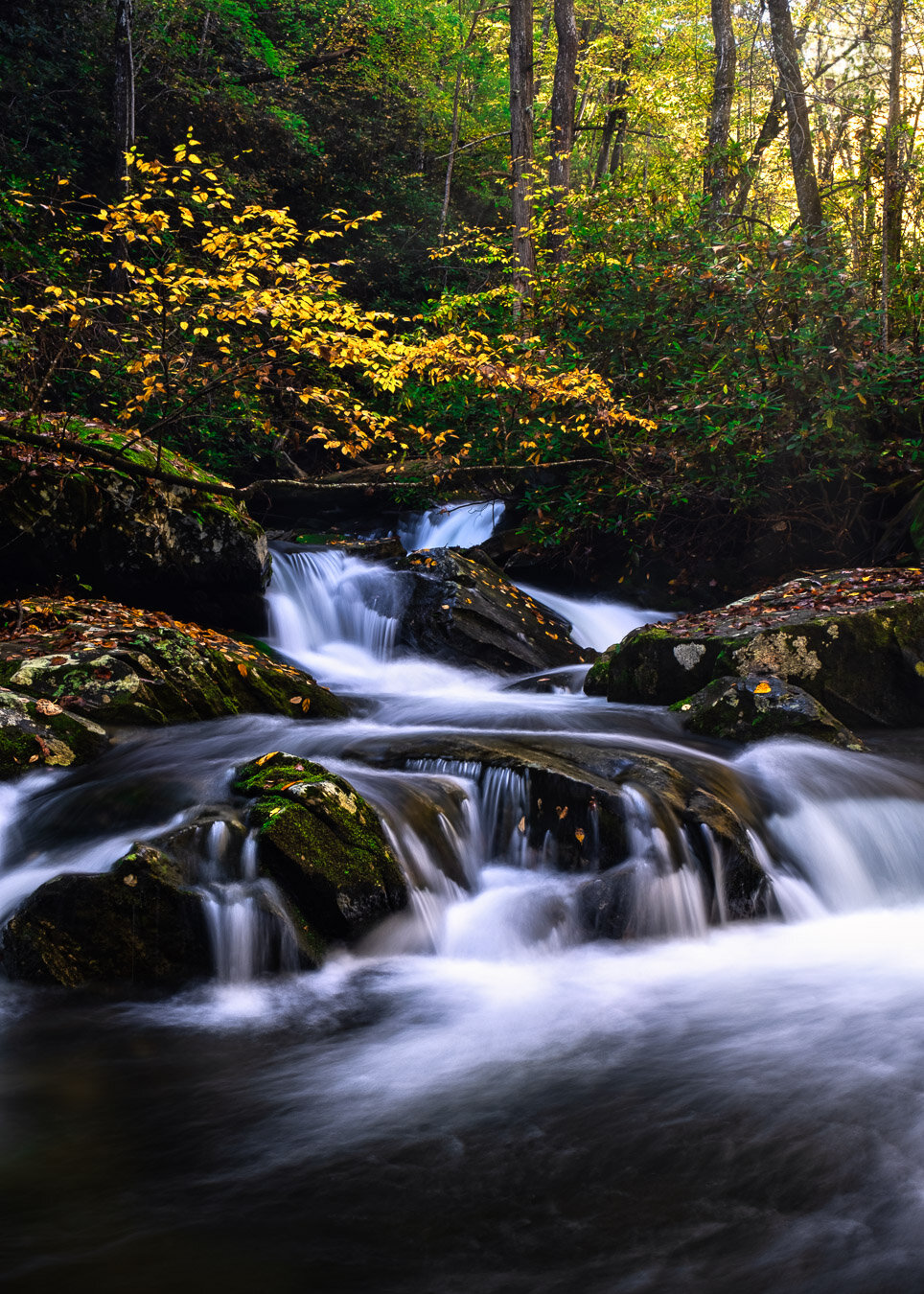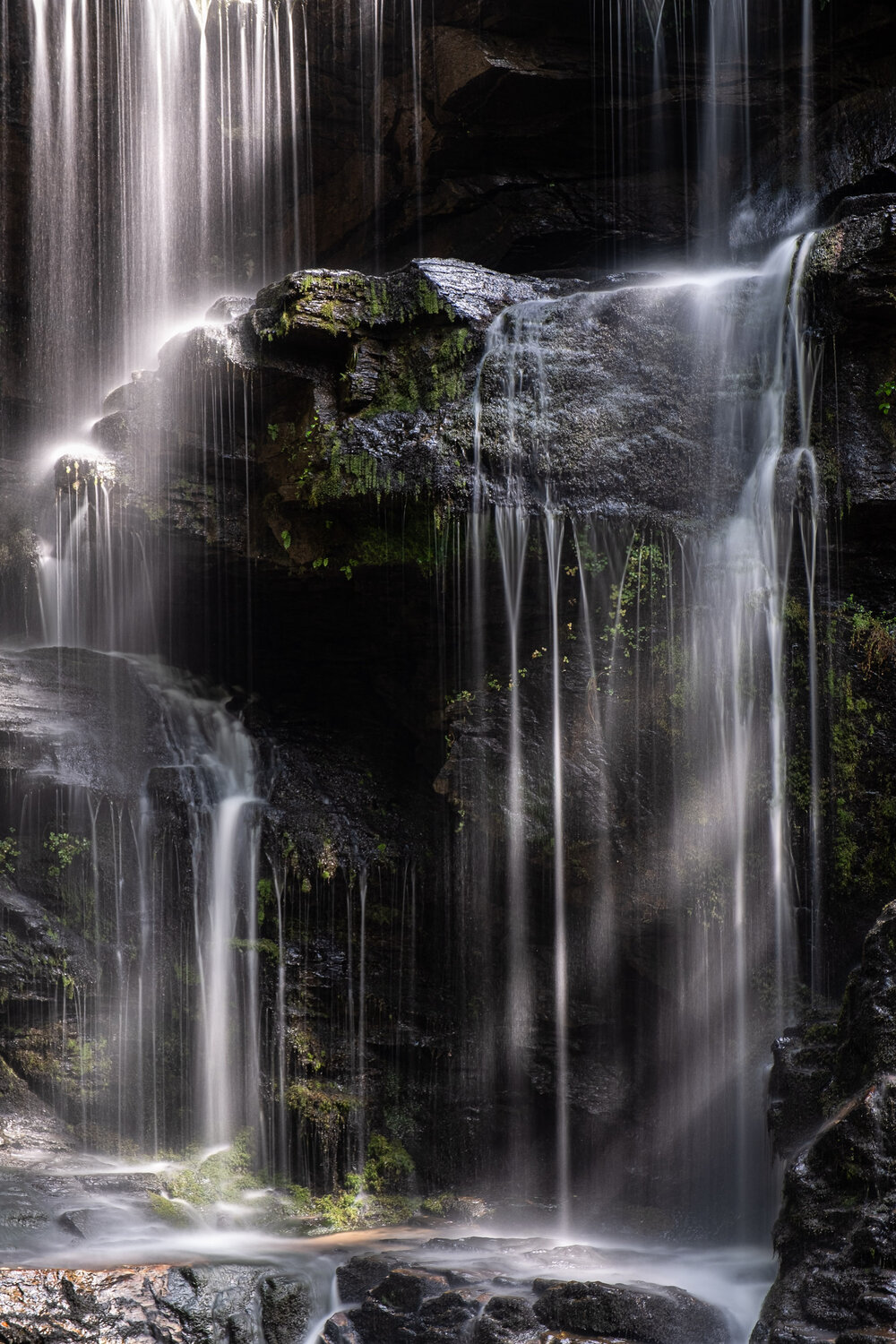By Talor Stone
With local and domestic exploration at an all-time high due to the coronavirus, a subject many of us can safely try our hand at is waterfalls! As a self-proclaimed waterfall aficionado, here are my top 5 tips for capturing beautiful waterfall images!
1. The Early Bird Gets the Best Light: Waterfalls are best photographed in soft lighting conditions to avoid those pesky highlights on the water. To get a nice even exposure, wake up early and shoot the morning blue hour and into the early morning. As an added bonus, this guarantees you avoid the crowds, and you can enjoy dynamic light changes as the sun rises.

2. Prepare to Get Wet: Often, the best images aren’t from the driest vantage points. I always bring waterproof boot covers or water shoes so I can get into the water and use small rapids and rocks to create interesting foregrounds. Of course, take great caution when entering the water and follow the rules for the area you’re in.
3. Take it Slow: Use an ND filter to slow your shutter speed for silky smooth water. Use the Goldilocks approach to your shutter speed: not too slow, not too fast, get it just right. A shutter speed that’s too long will rob your image of the detail in the water, while one that’s too short will not achieve the effect you’re after. I generally keep mine between 1-4 seconds, depending on the volume and speed of the water (use a longer shutter speed for low water flow). A polarizer is also an invaluable sidekick to reduce glare and enrich your contrast and colors.

4. Up Close and Personal: While it’s tempting to always shoot waterfalls with a wide-angle lens and a vertical composition, don’t forget to zoom! Focus on smaller details like individual cascades and terraces in the waterfall to create intimate images that capture a more abstract essence of what the waterfall is really all about.
5. Don’t Forget the Details: It’s easy to find yourself captivated by the waterfall – it’s the star of the show, after all! But don’t forget to look around at other details. You’ll likely spot ferns, mossy rocks, small rapids, and a host of other subjects, all of which help tell a story and create a ‘sense of place’ for your images.
Bonus Tip: One of the keys to great waterfall images is selecting the right subject. I always find that falls with lower water volume and multiple terraces create better images with more detail in the water and a wider range of creative compositions.
Hopefully, these tips have inspired you to get out there and shoot! And remember, if there isn’t a waterfall near home, these same principles can be applied for any moving water nearby.

View Post on Original Blog
https://muenchworkshops.com/blog/5-tips-for-better-waterfall-photography
